In This Issue:
Assisting Victims of Identity Theft-Related Refund Fraud
Why Did I Get a 1099-K Letter?
Voluntary Classification Settlement Program (VCSP)
Assisting Victims of Identity Theft-Related Refund Fraud
[dropcap]N[/dropcap]ational Taxpayer Advocate Nina E. Olson recently released her statutorily mandated mid-year report to Congress that identifies the priority issues the Taxpayer Advocate Service (TAS) will address during the upcoming fiscal year, including tax-related identity theft.The report notes that in recent years, taxpayers (and the IRS) have been victimized by identity thieves who use stolen identity information to file fraudulent returns to try to obtain refunds.
There are two circumstances under which taxpayers may be affected.
First, if an identity thief has filed a false return on which the IRS has paid a refund, the IRS will automatically freeze the return later filed by the legitimate taxpayer. A recent TAS study showed that the IRS takes about six months to resolve these cases and pay out the legitimate taxpayer’s refund. In each of calendar years 2013 and 2014, the IRS received about 730,000 identity theft cases with taxpayer impact, and over the last three fiscal years, TAS has received an average of about 52,000 identity theft cases a year.
Second, the IRS runs most returns claiming a refund through certain filters to identify suspicious returns. When it identifies a return as suspicious, the IRS suspends the processing of the return and issues a notice requiring the taxpayer to authenticate his or her identity. During the 2015 filing season, the IRS’s Taxpayer Protection Program (TPP) filters stopped more than twice as many questionable returns as in the prior year. About one-third of the returns stopped by the TPP turned out to come from legitimate filers, and at least for the largest segment of the TPP inventory, this false positive rate is up substantially from the 2014 filing season.
During the filing season alone, the IRS received about 1.6 million taxpayer calls on its Identity Protection Specialized Unit (IPSU) telephone line. The level of service was about 54 percent and the average hold time was about 25 minutes. It also received about 2.9 million taxpayer calls on its TPP telephone line. As noted above, the level of service was 17 percent for the TPP line, and the average hold time was about 28 minutes.
The report expresses concern that the IRS is not doing enough to assist identity theft victims and reiterates the National Taxpayer Advocate’s longstanding recommendation that the IRS assign a single employee to coordinate complex identity theft cases. “Equally important, no one employee is held accountable for the resolution of the case. Thus, affected taxpayers often feel like they are victimized a second time by the IRS’s
processes” the report says.
The report says a primary focus for TAS during the upcoming year will be to recommend improvements and alternative approaches to reduce the time it takes to achieve complete and accurate resolution of identity theft cases from the victim’s perspective.
If you would like to learn more about how to protect yourself from taxpayer identity theft, contact us today.
Why Did I Get a 1099-K Letter?
[dropcap]I[/dropcap]f you receive a letter or notice from the IRS, it will explain the reasons for the correspondence and provide instructions. The notice you receive covers a very specific issue about your account or tax return. Generally, the IRS will send a notice if it believes you owe additional tax or are due a larger refund, or if there is a question about your tax return.
What is Form 1099-K?
Form 1099-K, Payment Card and Third Party Network Transactions, is an IRS information return used to report certain payment transactions. You should get a 1099-K by the end of January if, in the prior calendar year, you received payments:
• from payment card transactions (e.g., debit, credit or stored-value cards)
• in settlement of third-party payment network transactions above the minimum reporting thresholds of gross payments that exceed $20,000, AND more than 200 such transactions
Collectively, all payment card transactions and all third-party payment network transactions (once the threshold amounts have been met) are referred to as reportable payments or transactions.
NOTE: The thresholds of greater than $20,000 and more than 200 transactions apply only to payments settled through a third-party network; there is no threshold for payment card transactions.
If you received a 1099-K, use it to assist you to correctly file your income tax return. Also be sure to retain it for your records. Remember, you must report all income you receive from your business on your tax return. In most cases, your business income will be in the form of cash, checks, and debit and credit card payments. Therefore, you should consider the amounts shown on Form 1099-K along with all other amounts received when calculating gross receipts for your income tax return.
You received one or more of these letters because you may have underreported your gross receipts. This is based on a comparison of your tax return and the Form(s) 1099-K furnished to you that shows an unusually high portion of receipts from 1099-K reportable transactions. It is very important that you respond to the IRS.
Following are some tips to help you with the inquiry.
• Read the letter thoroughly and complete any worksheets.
• Gather your tax records, including the Forms 1099-K that you received, and determine if you agree with the letter about underreporting your gross receipts.
• Respond to the letter in a timely manner.
• If you have questions or need more time to respond, contact the person listed in the letter.
• If appropriate, consult your tax professional for assistance.
How is the IRS going to use this information?
The IRS uses the information reported from third parties to ensure individuals and businesses meet their tax obligations. The IRS is integrating the new information supplied on the Form 1099-K into a variety of areas, including its compliance efforts, to ensure fairness and address non-compliance.
All 1099-K activities respect taxpayer rights and provide opportunities for taxpayers and tax practitioners to offer explanations or corrections if they receive a letter, a notice or audit.
If you have any questions regarding form 1099-K, please feel free to contact us.
Voluntary Classification Settlement Program (VCSP)
[dropcap]T[/dropcap]here has been a great deal of discussion regarding the DOL and IRS stepping up their enforcement actions regarding the misclassification of employees as independent contractors. Because of this heightened scrutiny we wanted to remind readers that if they are concerned about their handling of this issue we can help. There is currently a settlement program offered to employers that we discuss below.The VCSP is available for taxpayers who want to voluntarily change the prospective classification of their workers. The program applies to taxpayers who are currently treating their workers (or a class or group of workers) as independent contractors or other nonemployees and want to prospectively treat the workers as employees.
A taxpayer must have consistently treated the workers to be reclassified as independent contractors or other nonemployees, including having filed all required Forms 1099 for the workers to be reclassified under the VCSP for the previous three years to participate.
Additionally, the taxpayer cannot currently be under employment tax audit by the IRS and the taxpayer cannot be currently under audit concerning the classification of the workers by the Department of Labor or by a state government agency.
If the IRS or the Department of Labor has previously audited a taxpayer concerning the classification of the workers, the taxpayer will be eligible only if the taxpayer has complied with the results of that audit and is not currently contesting the classification in court.
Exempt organizations and government entities may participate in VCSP if they meet all of the eligibility requirements.
A taxpayer participating in the VCSP will agree to prospectively treat the class or classes of workers as employees for future tax periods. In exchange, the taxpayer will:
Pay 10 percent of the employment tax liability that would have been due on compensation paid to the workers for the most recent tax year, determined under the reduced rates of section 3509(a) of the Internal Revenue Code.
Not be liable for any interest and penalties on the amount; and
Not be subject to an employment tax audit with respect to the worker classification of the workers being reclassified under the VCSP for prior years.
To participate in the VCSP, a taxpayer must apply using Form 8952, Application for Voluntary Classification Settlement Program. The application should be filed at least 60 days prior to the date the taxpayer wants to begin treating its workers as employees. The IRS will make every effort to process Form 8952 with sufficient time to allow for the voluntary reclassification on the requested date.
Along with the application, the taxpayer may provide the name of a contact or an authorized representative with a valid Power of Attorney (Form 2848). However, the taxpayer, and not the taxpayer’s representative, is required to sign Form 8952. The IRS will contact the taxpayer or authorized representative to complete the process after reviewing the application and verifying the taxpayer’s eligibility.
Eligible taxpayers accepted into the VCSP will enter into a closing agreement with the IRS to finalize the terms of the VCSP, and will simultaneously make full and complete payment of any amount due under the closing agreement.
If you would like to review your situation with one of our professionals, please contact us today.






